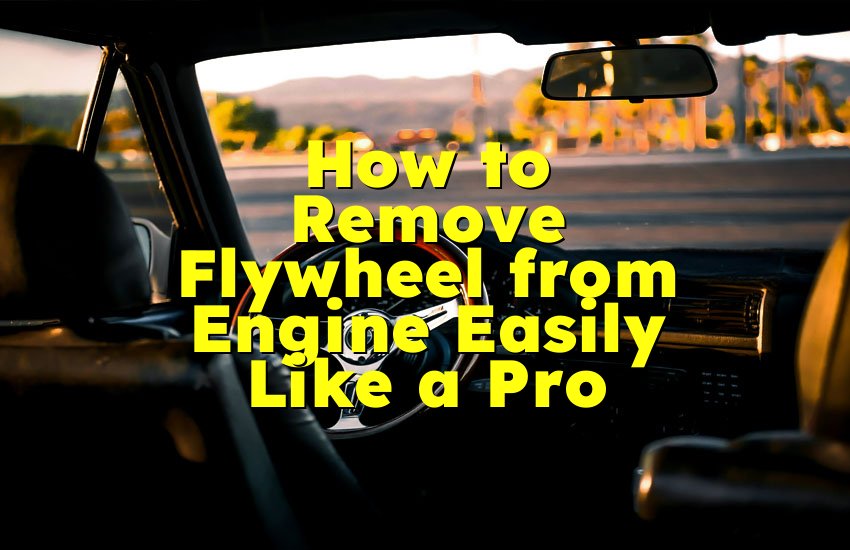As an Amazon Associate, I earn from qualifying purchases at no extra cost to you.
How to Use Seafoam to Clean Fuel Injectors (6 Easy Steps)
The engine stumbles, the gas pedal feels heavy, and the car just does not run smooth. You start thinking maybe it is fuel, maybe dirt stuck inside. Suddenly the idea of cleaning injectors comes in. But the question is—how? Many car lovers whisper one name: Seafoam. A small can that promises big results. Sounds almost magical, right? Let's dig in and see how this works in real life, and why your car may thank you later.
Seafoam Fuel Injector Cleaning: Simple Guide for Smooth Driving
Get the Right Tools and Supplies
First, you need the right things in your hand. Without them, the job gets messy fast. Seafoam is the main star here. You will need one can, maybe two if the tank is big. A funnel helps too. Gloves are smart, because fuel smells strong and sticks to your skin. Safety glasses are not a bad idea either, especially if you are clumsy like me.
Next, think about fuel level. It works best when the tank is not full. Half a tank is good. This way the Seafoam mixes stronger with fuel. The more direct the mix, the deeper it cleans. Your car gets a nice shot of cleaner, and you get results faster. Sounds fair, right?
Also, pick the right spot to do this. Outside or in a garage with open air is safer. The smell is heavy, and you do not want it trapped indoors. Keep fire or smoke far away. Gas fumes and sparks are the worst mix. Many people skip this, but it is important for safety.
Before you begin, check your car manual too. Some cars may suggest limits for additives. Knowing that keeps you safe. With these small things ready, you can move ahead with confidence. It is all about being prepared so nothing goes wrong later. That makes the job easier and smoother.
- One can of Seafoam
- A funnel
- Gloves and glasses
- Half-full fuel tank
- Open space with airflow
Add Seafoam into the Fuel Tank
Now comes the fun part. Open the fuel cap, hold your funnel, and pour the Seafoam in. Slow and steady works better. If you rush, it spills, and that smell sticks for days. Once the can is empty, close the cap tightly. A loose cap can trigger warning lights, and that gets annoying.
The usual rule is one ounce for every gallon of gas. But if you feel the car is really dirty, you can add more. Some people even pour a whole can into half a tank. That makes the mix stronger. The dirt loosens faster and burns away during driving. Still, do not go crazy. Too much cleaner may not give extra benefits.
After adding, start the car right away. Let it idle for a minute. This helps the mix move into the fuel system. It starts touching the injectors, cleaning as it goes. You may notice a little smoke later. That is normal. It means dirt is burning out. Think of it like your car coughing out old dust.
Finally, take the car for a short drive. This gets everything moving inside. The engine breathes better as Seafoam spreads. Slowly but surely, the injectors unclog. If you love the sound of a smoother engine, this part will make you smile. It is a small effort with big reward.
- Pour slowly into tank
- Use funnel to avoid mess
- Ratio: 1 ounce per gallon
- Start engine right after
- Take a short drive
Let the Cleaner Do Its Work
Once inside, the Seafoam begins its job. It breaks down carbon deposits that block injectors. Think of it as a gentle scrub. The dirt turns into smaller bits and burns away with fuel. Slowly, the spray pattern of injectors becomes sharp again. That makes the engine run smoother and more powerful.
The drive during this process matters. A mix of low speed and highway speed works best. Slow city driving helps at first, then open road speed clears the rest. The longer you drive, the deeper the cleaning gets. If you notice smoke from the exhaust, do not panic. It is the dirt leaving the engine.
During this time, keep an ear open. Listen to how the engine feels. If it starts sounding more stable, you are on the right path. Sometimes the throttle feels lighter too. It is a clear sign that the injectors are not fighting dirt anymore. You will notice better response under your foot.
Do not expect miracles in five minutes though. Give it time to circulate. Sometimes one tank of fuel with Seafoam clears most dirt. In very dirty engines, you may need a second round. That is fine. Slow cleaning is safer than sudden harsh chemicals. The car likes gentle care more than rough treatment.
- Cleaner breaks carbon
- Dirt burns with fuel
- Mix city and highway driving
- Listen for smoother sound
- Be patient with results
Notice Changes in Engine Performance
As the cleaning works, your car starts to feel different. The idle becomes calmer. It shakes less at traffic lights. That alone feels like a small victory. Nobody likes a car that rattles like a washing machine. A smooth idle is proof the injectors are working right again.
Acceleration also changes. Press the gas and it responds quicker. Before, you might have pushed harder to get the same speed. Now it reacts with less effort. That is because the fuel spray is even and clean. The engine finally gets the right mix of fuel and air again. That makes driving lighter and more fun.
You may even notice fuel economy improving. Dirty injectors waste gas because they spray unevenly. After cleaning, the same fuel burns more fully. Over time, that means fewer trips to the pump. Saving money while the car runs better feels like a double win. Small details like this add up.
However, do not forget: results vary. Some cars improve a lot. Others improve a little. It depends on how dirty things were before. Even if you do not see huge changes, know that you are still protecting the engine. A clean system lasts longer. That is always worth the effort.
- Idle feels smoother
- Acceleration quicker
- Fuel economy may rise
- Savings on gas possible
- Engine stays healthy longer
Repeat Treatment When Needed
Cleaning injectors is not a one-time magic. Dirt builds again over time. That is just how engines work. Small bits from fuel, dust, and carbon keep sneaking back in. To keep things fresh, repeat the Seafoam treatment now and then. It becomes part of regular care, like oil changes.
How often should you repeat it? Many people do it every 3,000 to 5,000 miles. Others prefer once every oil change. If you drive in dirty or dusty areas, you may need it sooner. The good thing is, Seafoam is safe to use often. It does not harm the system if you stay within the right amount.
Think of it as a habit. Regular small cleanings prevent big problems later. Waiting until the car struggles badly may mean costly repairs. Injectors are not cheap to replace. A few dollars in cleaner now saves hundreds later. That thought alone makes repeating worth it.
You can even use smaller doses in each tank for ongoing care. It keeps dirt from building too much. Many drivers call it preventive maintenance. It keeps the injectors sharp and strong all year. With time, you will feel the car runs more consistent and steady. That peace of mind is priceless.
- Repeat every few thousand miles
- Link with oil change schedule
- Safe for regular use
- Prevents costly repairs
- Use small doses for steady care
Combine with Other Good Habits
Seafoam is great, but it cannot fix everything alone. Pair it with other good habits for best results. For example, always buy fuel from trusted stations. Cheap, dirty gas adds more problems. Good fuel means fewer clogs to start with. It is a simple choice with long-term value.
Changing your fuel filter also helps. A clogged filter lets dirt sneak past. Replacing it on time keeps the whole system cleaner. The injectors thank you for that. Oil changes matter too. Clean oil keeps the engine breathing better. When the engine is happy, injectors stay happier too.
Driving style plays a role as well. Constant short trips do not burn off carbon fully. Sometimes a good long highway drive helps clean things naturally. Engines like to stretch their legs. Combine that with Seafoam, and you get double cleaning power. It is easy and even fun.
Lastly, do regular checks. Listen to your car. If it sounds rough, acts slow, or drinks more fuel, it may be time again. Caring for the engine is like caring for your body. Small habits, repeated often, keep things strong and healthy. Your car deserves the same love.
- Use good fuel always
- Replace fuel filter
- Keep oil changes on time
- Mix short and long drives
- Listen to your car's signs
Final Thoughts
Seafoam makes injector cleaning simple, safe, and effective. It works quietly inside while you drive. With small effort, you save fuel, money, and stress. Do it often enough, and your engine stays sharp, smooth, and ready for the road. A tiny can really does make a big difference. Your car may just thank you with every mile.
| Item | Purpose | Extra Notes |
|---|---|---|
| Seafoam can | Cleaner | One per treatment |
| Funnel | Pouring aid | Prevents mess |
| Gloves | Safety | Avoid fuel smell |
| Half tank gas | Mixing | Stronger ratio |
| Open space | Ventilation | Avoid fumes |
| Regular use | Prevention | Saves money |
Do fuel injectors really need cleaning with Seafoam?
Fuel injectors are like the heart of your car's fuel system. They spray fuel in a fine mist so the engine can burn it well. Over time, small dirt and carbon build up inside them. When that happens, the spray turns uneven. The engine struggles to burn fuel properly. That leads to poor idle, slow acceleration, and wasted gas. Nobody wants that kind of problem hanging around.
Now, the big question is if Seafoam really helps. The answer is yes. Seafoam is made to break down the sticky dirt inside injectors. When added to fuel, it flows with the gasoline straight into the injectors. The chemicals inside loosen carbon and push it out. That allows the injector tips to spray more evenly again. The engine feels smoother, and you notice better response on the road. Many drivers report a real difference after just one treatment.
It is true, not all cars get the same big improvement. If your injectors are lightly dirty, you might not feel much change. But even then, the inside gets cleaned gently. That prevents future clogs from becoming serious. Think of it like brushing your teeth. Sometimes you don't notice right away, but it prevents problems later. With cars, prevention is always smarter than repair.
Seafoam also has another advantage. It cleans not just injectors, but also valves and chambers. That means the whole fuel system gets freshened up in one go. It's simple, safe, and doesn't need tools. Compared to costly injector replacements, a few dollars for cleaner is an easy choice. It's like giving your car a healthy drink that keeps it running strong. So yes, injectors do need cleaning, and Seafoam is one of the best ways to do it.
Can Seafoam damage fuel injectors if used too often?
This worry comes up often. Drivers fear that using cleaners like Seafoam too much might harm parts. It sounds fair because chemicals can sometimes be harsh. But Seafoam is different. It is made with gentle ingredients that do not eat away at metals or seals. In fact, many mechanics use it as regular care. That should ease some of the fear right away.
When used in the right amount, Seafoam does not damage injectors. The directions suggest about one ounce per gallon of gas. Even if you use a full can in half a tank, it is still safe. What happens is simple: the cleaner mixes with gas and burns through the engine. The carbon softens and burns away, while the fuel system stays safe. It is more like soap than acid. That is why it is trusted by so many car owners.
Still, balance matters. Using it every single tank may be overkill for most drivers. Cars that use good quality fuel in clean areas don't get dirty that fast. For them, using Seafoam every few thousand miles is plenty. On the other hand, cars in dusty or tough conditions may need it more often. It depends on how the engine lives its daily life. But in no case does normal use cause damage.
Think of Seafoam as a helper, not a medicine. Too much medicine is bad for people, but Seafoam isn't like that. It is safe, even with repeat use, as long as you follow simple directions. Instead of harm, it adds life to your injectors. They stay clean, they spray better, and the engine thanks you. That is why mechanics keep recommending it year after year. No serious risk, only steady care.
Do cars run better right after using Seafoam?
Many people expect instant magic. They pour in Seafoam, start the car, and wait for miracles. Sometimes, yes, the difference is quick. Idle feels smoother, and the engine sound changes within the same drive. That is because the cleaner starts working fast. Carbon begins breaking down and burning away almost right away. The car breathes easier, and you can hear or feel it.
However, not all engines show changes that soon. If the dirt inside is heavy, it may take a full tank to notice results. The cleaner has to move through fuel lines, injectors, valves, and chambers. Each part takes time to clear out. During this process, some cars even blow smoke from the exhaust. That is dirt leaving, which is a good sign. It means the cleaner is working deeply.
Also, improvement depends on how bad things were before. A car with very dirty injectors feels a big difference. But a car that was already in good shape may feel only a little smoother. That does not mean the Seafoam failed. It still cleaned areas you cannot see. Over time, the benefits add up. Fuel economy gets better, and the engine runs with less strain.
In short, yes, cars can run better right after using Seafoam. Sometimes the change is big and fast, sometimes slow and steady. Either way, the car wins. The important part is not to expect wild miracles after just a few miles. Give it some time, keep using it as needed, and the car will show the difference. Patience with maintenance always pays off.
Can Seafoam fix rough idle or misfires?
A rough idle feels annoying. The car shakes, the wheel vibrates, and it just feels wrong. Misfires are even worse. The engine skips, power drops, and sometimes it even stalls. These problems often come from dirty injectors or carbon build-up. That's when people wonder if Seafoam can really fix it. The short answer: sometimes yes, sometimes no. It depends on what causes the issue.
Seafoam is designed to clean. If the rough idle or misfire comes from clogged injectors, then yes, it can help a lot. The cleaner removes dirt from the injector tips. That makes the fuel spray more even. The engine then gets the right air and fuel mix. Often, this clears up the shaking and restores smooth idle. Many drivers notice fewer misfires after one or two treatments.
But if the cause is something else, Seafoam will not be enough. Misfires can also come from bad spark plugs, weak coils, or vacuum leaks. In those cases, Seafoam may improve things slightly, but it will not solve the root problem. That is why listening to the car matters. If issues stay after cleaning, then deeper checks are needed. A mechanic can run tests to find the real cause.
Still, Seafoam is worth trying first. It is cheap, safe, and easy. If the idle smooths out after using it, you saved yourself a bigger repair. If not, at least you ruled out fuel system dirt. That makes the next diagnosis easier. Either way, your car gets a cleaner system as a bonus. So while it is not a magic cure for all misfires, it is a smart starting point for many.
Frequently Asked Questions (FAQs)
Is it safe to use Seafoam in every car?
Yes, Seafoam is safe in most cars that run on gasoline or diesel. It is made to work with both older and newer engines. The formula is gentle, so it does not harm seals, sensors, or injector tips. It simply mixes with fuel and flows through the system. Many mechanics use it daily. However, it is always smart to check your car's manual. Some makers may have limits on additives.
Can Seafoam clean other parts besides injectors?
Yes, it can. Seafoam does not stop at injectors. Once in the fuel, it travels through the whole system. It touches fuel lines, valves, pistons, and chambers. Everywhere it goes, it breaks down carbon and dirt. That means the engine breathes better overall. Many people also use Seafoam directly through the intake to clean valves. It works like a full system refresher, not just injector cleaner.
Do I need to empty the fuel tank before adding Seafoam?
No, you do not need to empty the tank. In fact, Seafoam works best when the tank is half full. This way, the cleaner mixes stronger with the fuel. If the tank is full, the cleaner becomes too diluted. That makes the effect weaker. So, aim for about half a tank, pour in the right amount, and then drive. It is simple and does not require draining any fuel.
Is it normal for smoke to come out after using Seafoam?
Yes, it is normal and even expected. The smoke is carbon and dirt burning off from the engine. It can be white or gray and usually happens after the first drive. Do not worry if you see it. In fact, the more smoke, the more dirt is leaving. It will fade as the system gets cleaner. If smoke keeps going for days, then something else may be wrong.
Can Seafoam replace regular car maintenance?
No, it cannot. Seafoam is helpful, but it is not a replacement for oil changes, filter changes, or spark plugs. Think of it as a helper. It keeps the fuel system clean, but the rest of the car still needs care. Use Seafoam along with regular maintenance. When combined, the car runs stronger, smoother, and lasts longer. Skipping other services is never a good idea.
Is it better to add Seafoam before or after filling gas?
It is usually better to add it before filling up. Pour Seafoam into the tank, then add gas. The fuel will help mix it evenly right away. This ensures the cleaner spreads well through the system. If you add it after, it still works, but mixing may take longer. Either way, the important part is to use the right ratio for your tank size.
Can Seafoam improve fuel economy?
Yes, in many cases it does. Dirty injectors waste fuel because they spray unevenly. When Seafoam cleans them, fuel burns more fully. This means you get more miles per gallon. Some drivers see big improvements, while others notice small ones. It depends on how dirty the injectors were. Even small gains add up over time. Saving fuel while cleaning the engine is always a good deal.
Do I need a mechanic to use Seafoam?
No, you can do it yourself. That is the beauty of it. Just pour it into the tank with a funnel, follow the simple ratio, and drive. It does not need tools or special skills. Anyone can do it safely at home. Of course, if you are not comfortable, a mechanic can help. But most drivers find it easy enough to handle on their own.











